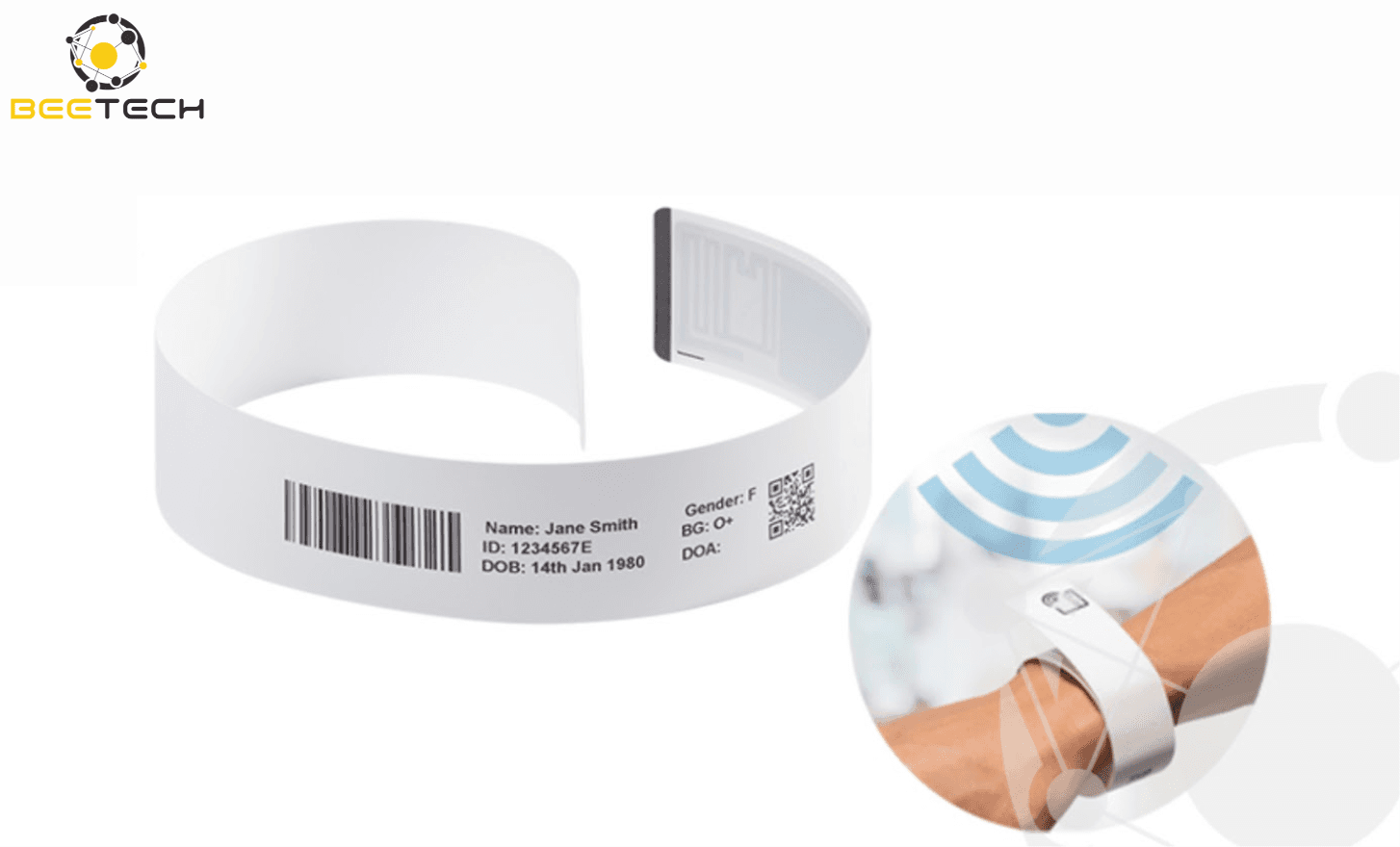80-82 Cao Duc Lan, District 2, HCMC, Vietnam
+84 76 865 6688
info@beetech.com.vn
+84 76 865 6688
About us
Contact us
80-82 Cao Duc Lan, District 2, HCMC, Vietnam
+84 76 865 6688
info@beetech.com.vn
+84 76 865 6688
About us
Contact us

Top 7 Common Reasons Why RFID Tags Fail to Scan (and How to Fix Them)
RFID (Radio Frequency Identification) technology has become an indispensable solution across various industries such as logistics, warehousing, retail, manufacturing, education, and healthcare. Using RFID tags enables businesses to manage assets, personnel, and goods more quickly and accurately. However, in actual deployment, many users encounter situations where RFID tags cannot be scanned, causing operational disruptions and directly impacting work efficiency.
So, why do RFID tags fail to be read, even when the system appears to be functioning properly? This article will provide a detailed analysis of the 7+ most common causes, along with specific solutions for each scenario—helping you save time, reduce costs, and minimize risks when implementing RFID systems.

To understand why an RFID tag is not readable, we first need to grasp the basics of RFID operation:
RFID Tag: Consists of a chip and an antenna, available in active (battery-powered) or passive (no battery) versions.
RFID Reader: Sends a radio signal to the tag, which then responds with encoded information.
Frequency Bands: RFID operates on several frequency bands: LF (125–134 kHz), HF (13.56 MHz), and UHF (860–960 MHz).
Read Range: LF/HF tags typically offer ranges under 1 meter, while UHF tags can reach up to 10–15 meters depending on power and environment.
Issue Description:
The tag is bent, cracked, or exposed to harsh conditions, damaging the internal chip or antenna.
How to Check:
Use another reader or UID-checking software to test the tag.
If none of the readers can detect the tag, it’s likely damaged.
Solution:
Replace the tag.
Use encapsulated RFID tags for rugged or industrial environments.
Issue Description:
The user positions the tag too far or too close to the reader.
The tag is not aligned with the main signal area or is angled incorrectly.
Solution:
Place the tag within the optimal scanning range recommended by the device (typically 3–10 cm for HF, 1–5 m for UHF).
Rotate the tag so that its antenna is parallel with the reader’s signal direction.
Issue Description:
RFID signals are easily absorbed or reflected by metal and weakened by liquids. Tags attached to metal surfaces, machinery, or liquid containers are more difficult to scan.
Solution:
Use anti-metal RFID tags for metal surfaces.
In humid environments, use waterproof tags or mount tags outside of liquid containers.
Issue Description:
An HF tag is used with a UHF reader or vice versa, causing a frequency mismatch.
Solution:
Check the technical specifications: HF tags (13.56 MHz) require HF-compatible readers (e.g., NFC).
UHF tags (860–960 MHz) must be used with UHF readers.
Never mix different RFID frequency types.
Issue Description:
The RFID reader is not receiving power, loses network connection, or runs on outdated firmware.
How to Check:
Inspect power sources and status indicator lights.
Use test software or RFID management tools to check the reader’s connection.
Solution:
Update the reader’s firmware.
Check drivers and communication protocols (USB, COM, TCP/IP).
Ensure stable connectivity, especially for cloud-based readers.
Issue Description:
The tag is blank or hasn’t been encoded with an EPC or UID. Data may be in an incorrect format.
Solution:
Use RFID Writer software to encode the tag.
Ensure the data follows the correct format: EPC GEN2 (for UHF) or ISO/IEC 14443 (for HF).
If using encryption, configure the correct key before attempting to read the tag.
Issue Description:
The reader works, but the data doesn’t appear in the software.
Possible Causes:
Incorrect COM/IP port settings or unactivated API.
Missing drivers or permission issues.
Solution:
Install all required drivers.
Set up the correct ports and protocols.
Use official software provided by the supplier (e.g., Beetech’s UHF reader application).
Real-Life Example:
Warehouses with multiple RF-transmitting devices (walkie-talkies, Wi-Fi routers) can cause RFID interference. Tags placed too closely (tag collision) make it difficult for the reader to identify them individually.
Solution:
Reduce the number of tags being read simultaneously if anti-collision tech isn’t in use.
Position readers in open areas, away from strong signal emitters.
Choosing low-cost tags that don’t match environmental requirements (e.g., using paper tags in industrial settings).
Ignoring software–hardware–tag compatibility.
Overlooking physical challenges such as metal surfaces, walls, or interference.
Failing to train staff to regularly inspect and maintain the RFID system.
| Step | Check | Description |
|---|---|---|
| 1 | Reader power & status | LED indicators, network, power supply |
| 2 | Try another tag | Rule out faulty tags |
| 3 | Try another reader | Identify hardware-related issues |
| 4 | Software diagnostics | API, drivers, log records |
| 5 | Deployment environment | Placement, barriers, scan range |
| 6 | Log errors | Provide logs for technical support |
Beetech is a leading RFID solution provider in Vietnam offering end-to-end services including:
Various RFID Tags: Paper, anti-metal, epoxy, wristband, and more
Fixed & Mobile Readers: Ideal for logistics, production lines, libraries, and healthcare
Custom RFID Software: Fully integrable with ERP, POS, CRM, or custom systems
Nationwide Technical Support: Site surveys – Installation – User training
✅ Over 10 years of hands-on RFID deployment experience
✅ Expert engineers in both hardware and software
✅ Competitive pricing with all-inclusive packages
✅ 24/7 remote and onsite technical support
✅ Authorized distributor of Zebra, Unitech, Alien, Impinj…
👉 Having trouble scanning RFID tags?
Contact Beetech today for:
A free RFID system check-up
Expert advice on choosing suitable tags and readers
Optimized RFID solutions for warehouse, retail, and traceability management
📧 Email: info@beetech.com.vn
🌐 Website: https://beetech.com.vn



RFID and Digital ID – Revolutionizing the Food Industry Supply Chain
13/05/2025 09:23:01

Why should RFID tags be used in garment industry management?
13/05/2025 07:29:06

What is an RFID Wristband? Top 5 Reasons to Use an RFID Wristband
09/05/2025 07:05:15

What Is an RFID Gate System and How Does It Work?
09/05/2025 03:51:53

The Role of RFID in Healthcare
09/05/2025 02:55:55

What is RFID and why does it help manage inventory more accurately and efficiently?
06/05/2025 03:09:45